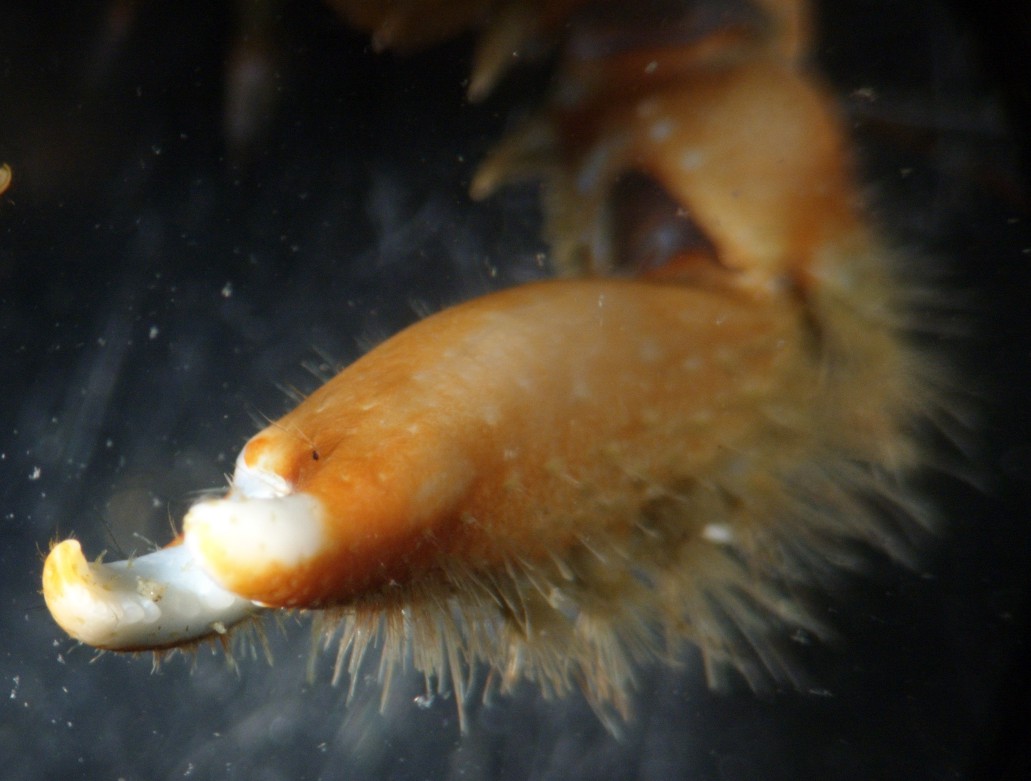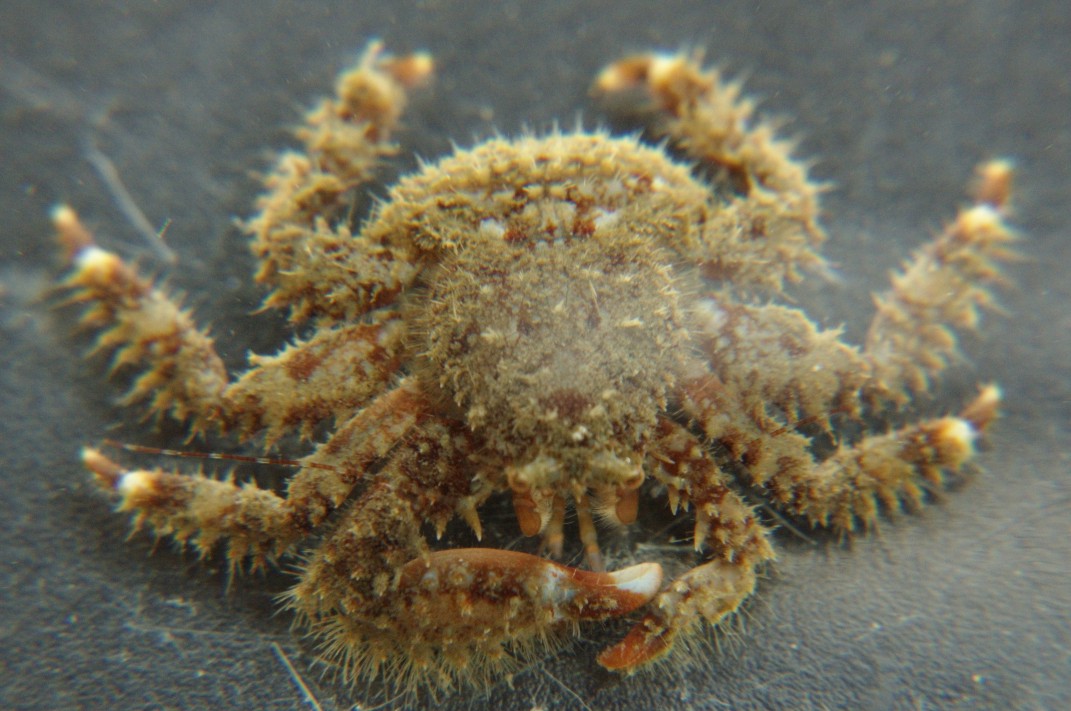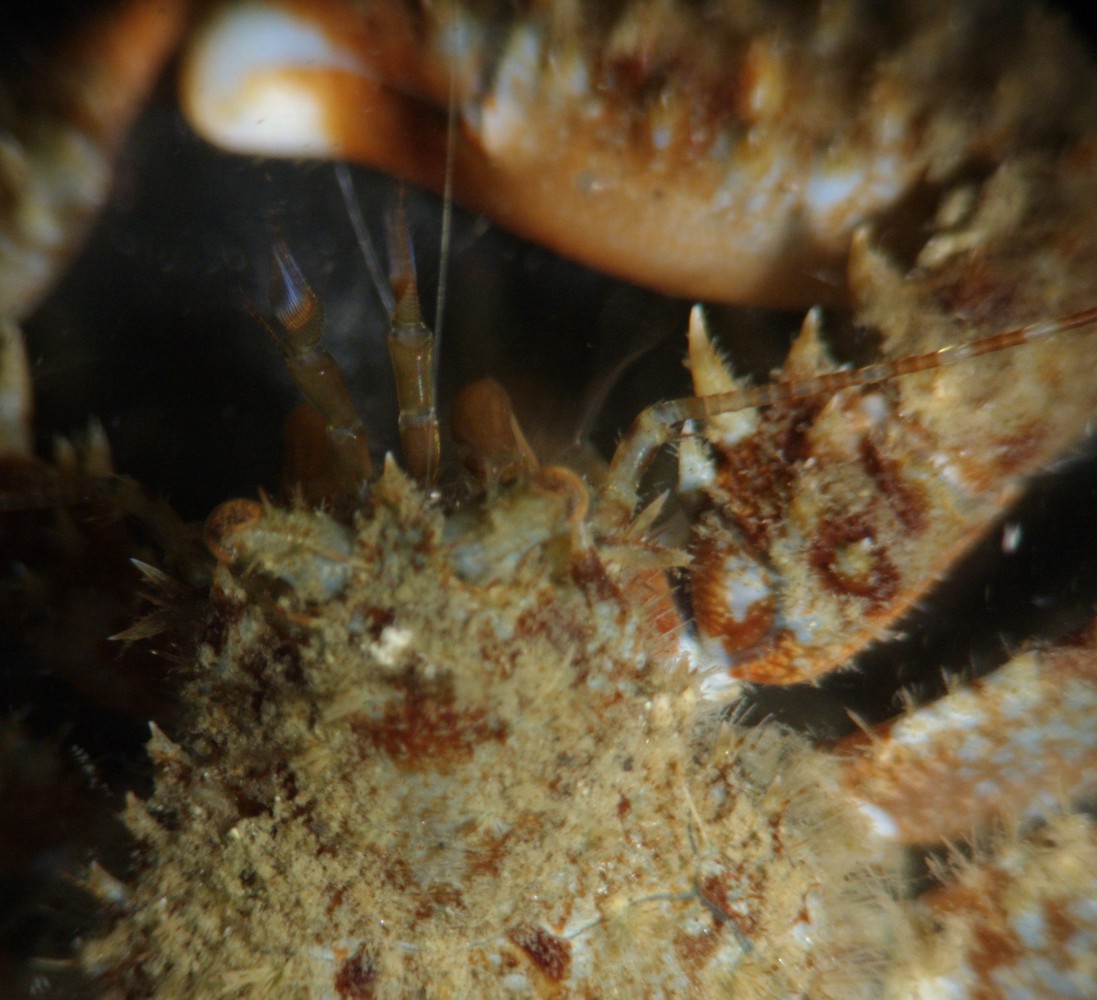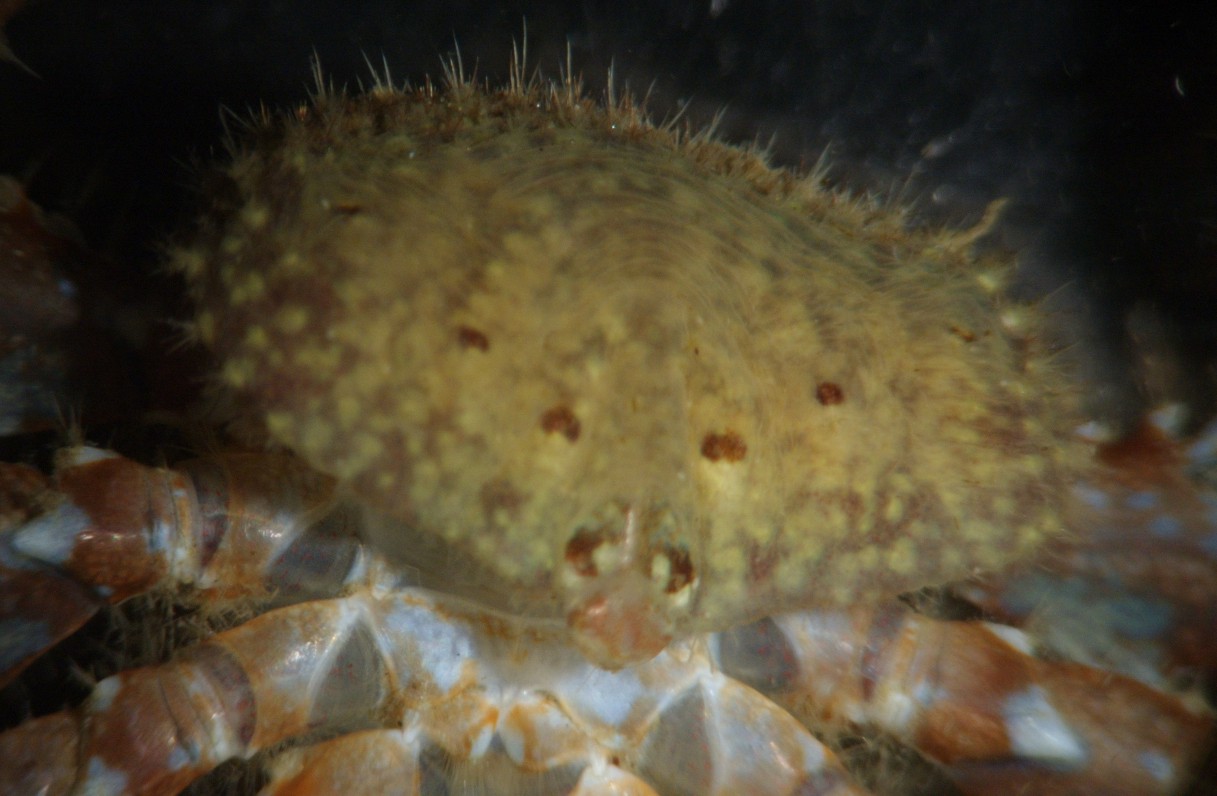Description: As with all Lithodids, this species is crablike but its 5th walking leg is small and curled up. The abdomen of Hapalogaster mertensii is fairly thick, soft, and held loosely under the thorax (photo). It has narrow plates on the second abdominal segment. The chelipeds are unequal in size and their upper surface has many spines. The upper surface of the propodus of the right chela usually has four lengthwise rows of spines. The cephalothorax and legs are flattened dorsovantrally and covered with a thick mass of setae. The dorsal setae on the carapace are of several types: Short, capitate setae on the general surface, as well as longer clavate setae and bristles on the tips of spines. The setae are yellowish or brown. The anteror margins of legs 2-4 are lined with large spines. The propodus of the walking legs have one dark red band and two white bands; and the tip of the dactyl is black. The chelipeds have white teeth and orange tips (photo). The small rostrum is about twice as long as wide and has a sharp tip but no prominent spines (photo). The carapace is brown and red with a few white spots, but covered heavily with golden brown setae. The cornea of the eye is black with orange flecks. The antennalflagellum has wide brown and narrow translucent bands (photo). Carapace up to 3.5 cm wide and long.
How to Distinguish from Similar Species:Hapalogaster grebnitzkii has a shorter rostrum, only 3 rows of spines on the right chela, and the tips of the chelae are bluish-black. It also lives farther north than here. Acantholithodes hispidus has many spines and orange tips to the chelipeds but its rostrum has many stout spines. Several other lithodids have similar body shape and may have many setae or spines on the legs but not all over the carapace as this species has. Hapalogaster cavicauda is smaller and lives farther south in California.
Geographical Range: Aleutian Islands to Puget Sound
Depth Range: Intertidal to 55 m. Mostly subtidal in our area.
Habitat: Under loose rocks and in crevices, often with seaweed.
Biology/Natural
History:
This species
is omnivorous. It may feed on other animals or on algae or
may filter
feed. Females may have up to about 2000 eggs from November to
April.
May be parasitized by the rhizocephalan barnacle Briarosaccus
tennellus. The large claw (chela)
of this crab has a small uncalcified opening on the underside.
| Return to: | |||
| Main Page | Alphabetic Index | Systematic Index | Glossary |
References:
Dichotomous Keys:Coffin, 1952
Hart, 1982
Kozloff, 1987, 1996
General References:
Harbo,
2011
Jensen,
1995
Kozloff,
1993
Lamb
and Hanby, 2005
Scientific Articles:
Miller, Paul Emanuel, 1960. A laboratory study of the
developmental
stages of Hapalogaster mertensii
(Brandt). Masters thesis,
Walla Walla College. 42 pp.
Web sites:
General Notes and Observations: Locations, abundances, unusual behaviors:
This closeup of the head shows the pointed rostrum
and the pattern of wide brown and narrower translucent bands on the antennae.

This view of the undrside of the right chela
shows the orange coloration with white teeth. Note the
underside
of the chela
is almost smooth while the upper side has spines and setae.
This view of the underside shows the soft abdomen
which is not held tightly against the underside of the thorax.
Authors and Editors of Page:
Dave Cowles (2011): Created original page
CSS coding for page developed by Jonathan Cowles (2007)
Rosario Invertebrates web site provided courtesy of Walla Walla University


